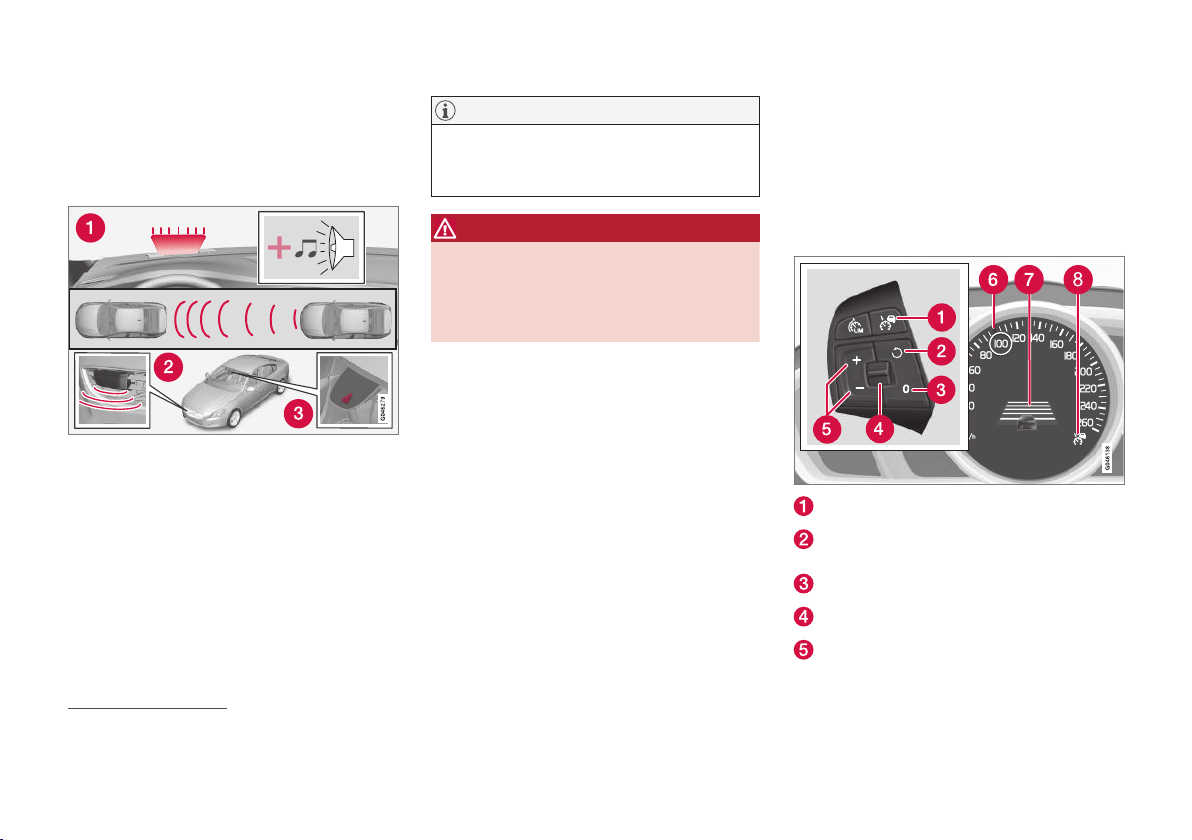Loading ...
Loading ...
Loading ...

||
DRIVER SUPPORT
* Option/accessory, for more information, see Introduction.
208
Warning lamp - braking by driver
required
Adaptive cruise control has a braking capacity
that is equivalent to approx. 40% of the car's
braking capacity.
1. Collision warning system warning lamp and warning
sound
7
.
If the car needs to be braked more heavily than
the adaptive cruise control capacity and the driver
does not brake, then the warning lamp and warn-
ing sound from the Collision warning system
(p. 231) are used in order to alert the driver that
immediate intervention is required.
NOTE
Information on the windscreen may be diffi-
cult to see in strong sunlight and when wear-
ing sunglasses.
WARNING
The adaptive cruise control only warns of
vehicles which its radar unit has detected -
hence a warning may not be given, or it may
be given with a certain delay. Do not wait for a
warning without braking when so required.
Steep roads and/or heavy load
Bear in mind that the adaptive cruise control is
primarily intended for use when driving on level
road surfaces. It may have difficulty in keeping
the correct distance from the vehicle ahead when
driving on steep downhill slopes, with a heavy
load or with a trailer - in which case, be extra
attentive and ready to slow down.
Related information
•
Adaptive cruise control - ACC* (p. 206)
•
Adaptive cruise control* - deactivate (p. 213)
•
Adaptive cruise control* - overtaking another
vehicle (p. 212)
Adaptive cruise control* - overview
Operation of the adaptive cruise control and
steering wheel keypad varies depending on
whether or not the car is equipped with speed
limiter
8
.
Adaptive cruise control with Speed
limiter
Cruise control - On/Off.
Standby mode ceases and the stored speed
is resumed.
Standby mode.
Time interval - Increase/decrease.
Activate and adjust the speed.
7
NOTE: The illustration is schematic - details may vary depending on car model.
8
A Volvo dealer has updated information about what applies in each respective market.
Loading ...
Loading ...
Loading ...